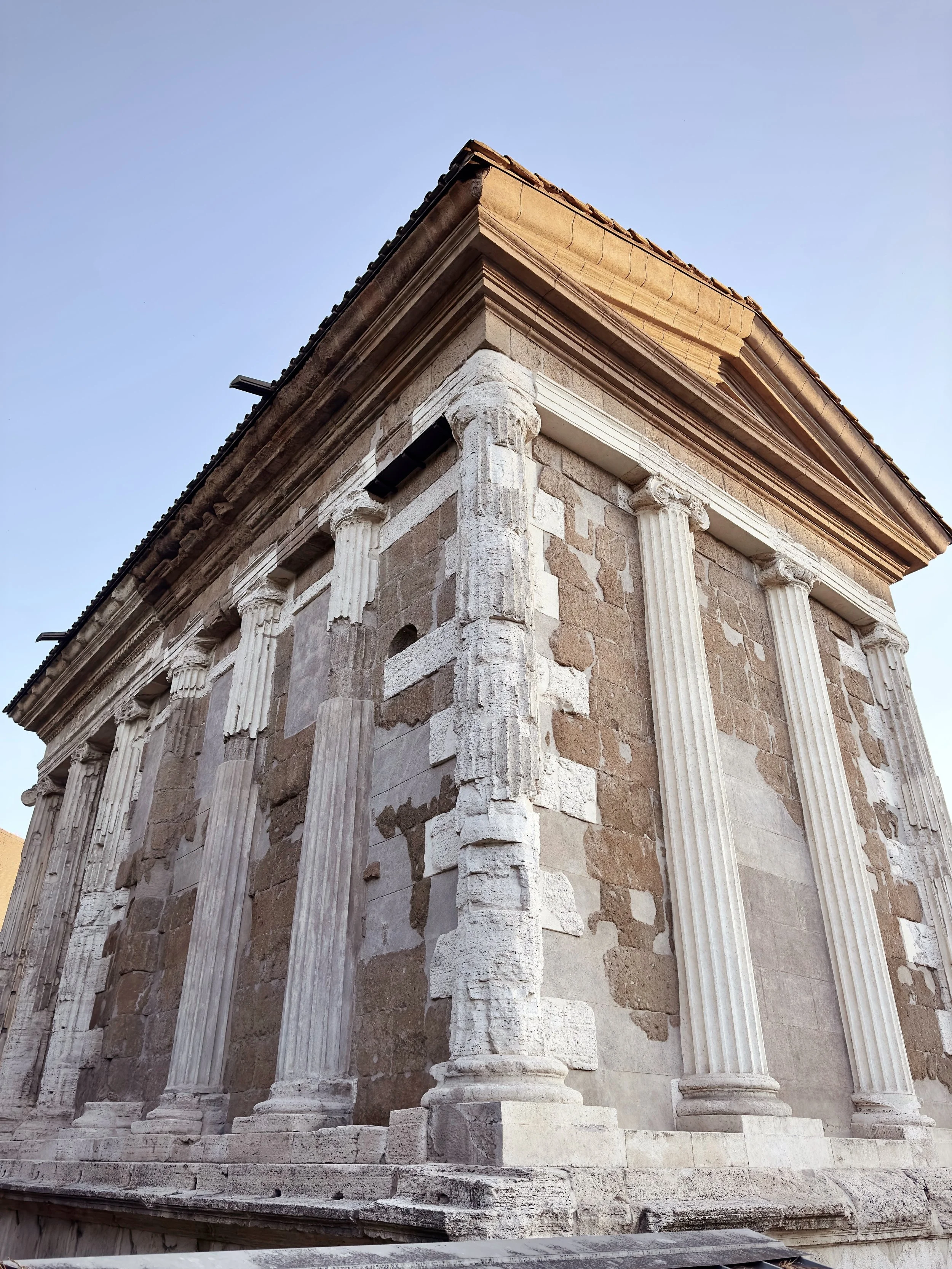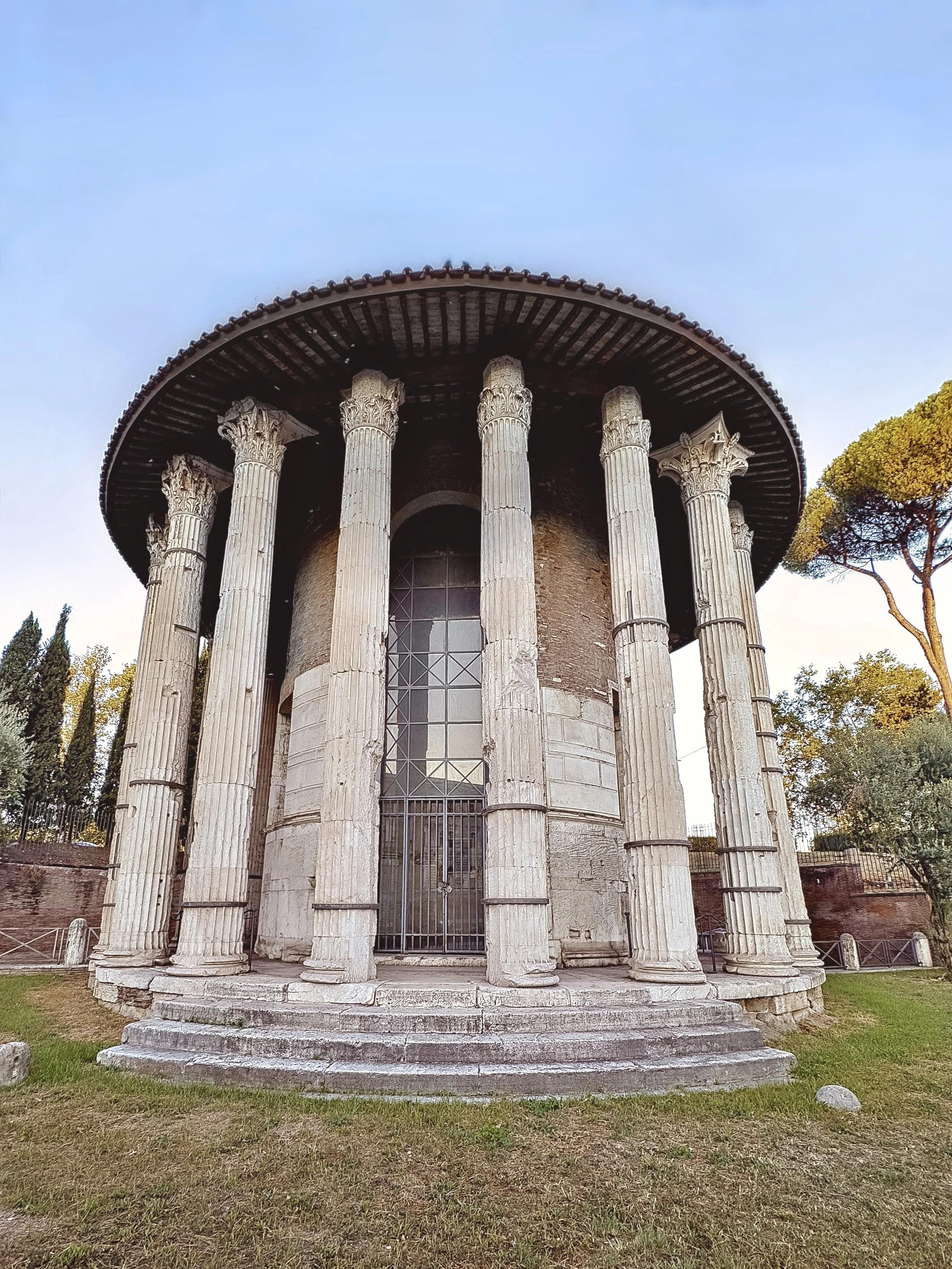THE FORUM BOARIUM
On my first full day in Rome, I started walking with nowhere in particular to go. I gasped when I saw these two buildings about 10 minutes into my walk. They’re in an area called the Forum Boarium which was the cattle market in ancient Rome.
The circular building is the Temple of Hercules Victor. Romans assigned attributes to their gods, such as the ‘Victor’ here which acknowledges the hero’s completion of his various labors. The temple dates to the 2nd century BC and is the oldest complete building still standing in Rome.
The other building is the Temple of Portunus. This incarnation was built around the 1st century BC, but the original structure dated back 1 or 2 centuries prior. Portunus was the god of doorways.
The Temple of Portunus
The Temple of Hercules
I loved seeing the ‘oldest’ of anything in Rome, but the real reason I gasped was much more macabre.
In 216 BC, during the Second Punic War with Carthage, the infamous Hannibal handed Rome its worst defeat and, if the figures are even remotely accurate, the worst defeat of any army in history. At the Battle of Cannae, Hannibal’s forces encircled up to 80,000 Roman troops and slaughtered them all. Dynasties were extinguished as mothers lost husbands and sons in unfathomable numbers, and it would take a generation to fully replenish the army. This defeat threw Rome into chaos. Their great fear was that Hannibal would proceed to the city itself and end their existence.
To stave off obliteration, the Romans took a highly unusual step in 215 BC to court the gods’ favor: they performed human sacrifice. A Greek man and woman, along with a Gallic man and woman, were placed in a stone chamber and buried alive. And this happened somewhere in the Forum Boarium.
Notionally, the Romans despised human sacrifice. They reviled the Celts for the practice, and the child sacrifices performed by Carthage were one of the rationales Rome used to justify the Punic Wars. But with their backs against the wall, the Romans felt compelled to take drastic action to save the empire.
“The Battle of Zama” by Cornelis Cort (1567). Arguably, the Romans’ human sacrifice worked since they won this final battle of the Second Punic War.
Whether by divine intervention or some other factor, Hannibal chose not to besiege the city of Rome, and Rome would go on to win the Second Punic War by defeating Hannibal at the Battle of Zama in 202 BC. Roman forces would be led by one of the few survivors of Cannae - Scipio Africanus, and his victory at Zama would forever ensconce him in the pantheon of great Roman generals.
I was alone as I walked around the site. A gentle breeze blew as I paused for a moment on that quiet morning to consider the desperation the Romans felt to perform such a rite, and the sheer terror the victims experienced during and after their interment. Presumably, they’re still down there, a silent testament to a time that seems monstrous to us, but perhaps isn’t too dissimilar from our own. Humans remain capable of unspeakable horrors across the vast expanse of time.




